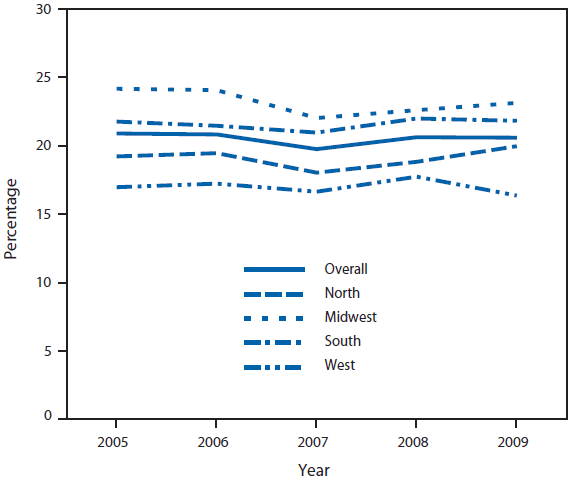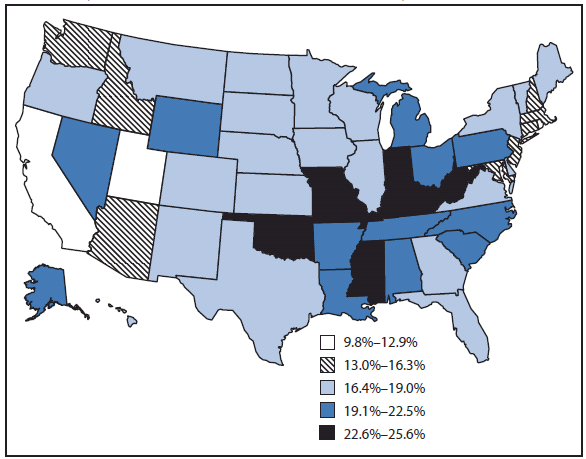* Additional information available at http://www.cdc.gov/tobacco/data_statistics/fact_sheets/fast_facts/index.htm.
† Additional information available at http://www.who.int/tobacco/mpower/mpower_report_full_2008.pdf.
§ Additional information available at http://www.healthypeople.gov/document/html/objectives/27-01.htm.
¶ Based on Council of American Survey and Research Organizations (CASRO) definitions. The response rate is the percentage of persons who completed interviews among all eligible persons, including those who were not successfully contacted. The cooperation rate is the percentage of persons who completed interviews among all eligible persons who were contacted.
** Additional information available at ftp://ftp.cdc.gov/pub/health_statistics/nchs/dataset_documentation/nhis/1997/srvydesc.pdf.
†† Additional information available at http://www.cdc.gov/mmwr/preview/mmwrhtml/mm5542a1.htm.
§§ Additional information available at http://www.oas.samhsa.gov/nsduh/2k8nsduh/2k8results.cfm.
¶¶ Additional information available at http://www.cdc.gov/nchs/data/nhsr/nhsr014.pdf.
*** Additional information available at http://www.cdc.gov/nchs/nhis.htm.
††† Additional information available at http://www.dol.gov/ebsa/healthreform.
§§§ Family Smoking Prevention and Tobacco Control Act, Pub. L. 111-31, 123 Stat1776 (2009). Additional information available at http://www.gpo.gov/fdsys/pkg/PLAW-111publ31/content-detail.html.
 ShareCompartir
ShareCompartir




